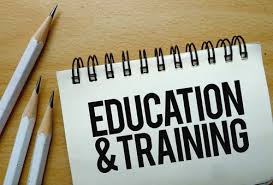In today’s job and internship market, LinkedIn is not just “nice to have”—it’s a must-have. Whether you’re a student looking for internships, bursaries, or networking opportunities, having a professional LinkedIn profile gives you a major advantage.
Here’s a step-by-step guide to help South African students build a LinkedIn profile that gets noticed.
🔹 1. Use a Professional Profile Photo
Your profile photo is your first impression.
📸 Tips:
- Wear a neat shirt or top (no hoodies or sunglasses).
- Use a clean background (a plain wall works).
- Smile confidently.
- Crop it from the shoulders up.
📌 Bonus Tip: You can take a good photo with your phone—just use natural light.
🔹 2. Add a Background Banner
Use this space to stand out. You can design a banner using Canva with:
- Your field of study (e.g., “Aspiring Civil Engineer”)
- Your university/college
- Motivational quote or internship hashtag
🔹 3. Write a Strong Headline
Instead of just “Student”, make it specific and goal-driven.
Examples:
- “Marketing Student | Passionate about Digital Branding & Social Media Strategy”
- “BCom Finance Graduate | Seeking Internship Opportunities in Investment Banking”
🔹 4. Craft a Compelling About Section
This is your short elevator pitch.
✅ Mention:
- What you’re studying
- Your goals (e.g., looking for internships, leadership programs, etc.)
- Your passions or interests
- Any achievements, even small ones (e.g., Dean’s List, volunteering)
Example:
I’m a third-year BCom student at UJ, passionate about finance and business strategy. I’m currently looking for internships in banking or consulting where I can grow and contribute. I’ve led campus projects, volunteered at NGOs, and am constantly learning through free online courses.
🔹 5. Add Your Education
Include:
- Your school/university
- Degree/Diploma
- Dates of attendance
- Any relevant courses or achievements
🎓 Don’t forget to add certificates from free online courses too (Google, Coursera, etc.).
🔹 6. List Your Skills
LinkedIn lets you list up to 50 skills.
Start with at least 5–10:
- Communication
- Leadership
- Public Speaking
- Time Management
- Microsoft Office
- Data Analysis (Excel, Power BI)
- Canva or Adobe Tools
- Social Media Marketing
🔄 Keep updating this as you learn and grow.
🔹 7. Add Experience (Even If It’s Not a Job)
Not all experience comes from a job. Add:
- Volunteering
- Campus leadership
- Freelance projects
- Event organizing
- Side hustles or school projects
Each entry should include:
- Title
- Organization
- What you did
- Achievements or outcomes
🔹 8. Request Recommendations
Ask lecturers, classmates, or mentors to write a short recommendation on your profile. This adds credibility and trust.
🔹 9. Follow Companies and Influencers
Follow brands you’re interested in (Unilever, Deloitte, Discovery, etc.) and industry influencers. This helps:
- You stay updated on internship openings.
- LinkedIn suggest relevant content and connections.
🔹 10. Start Networking Early
Don’t wait until after graduation.
📲 Connect with:
- Classmates
- Former teachers
- Alumni from your university
- Recruiters and HR interns
- Companies offering graduate programs
Always add a short message when sending connection requests.
✅ Final Tips
- Post updates occasionally: share an achievement, course certificate, or internship experience.
- Use hashtags like #InternshipSA #StudentJobs #GoInternSA
- Add your LinkedIn profile link to your CV and email signature.
🔗 Bonus: Here’s What to Add to Your Bio
🎓 Final-year IT student at Wits | Building my career in cybersecurity | Passionate about youth empowerment | Open to internship opportunities | 📩 ray.n@gointern.co.za
💥 Ready to Stand Out?
Start building your LinkedIn profile today and let opportunities find you. A strong LinkedIn presence can open doors to internships, scholarships, mentorship, and even your first job.
Keep learning, keep connecting, and remember—your career starts now.





Leave a Reply